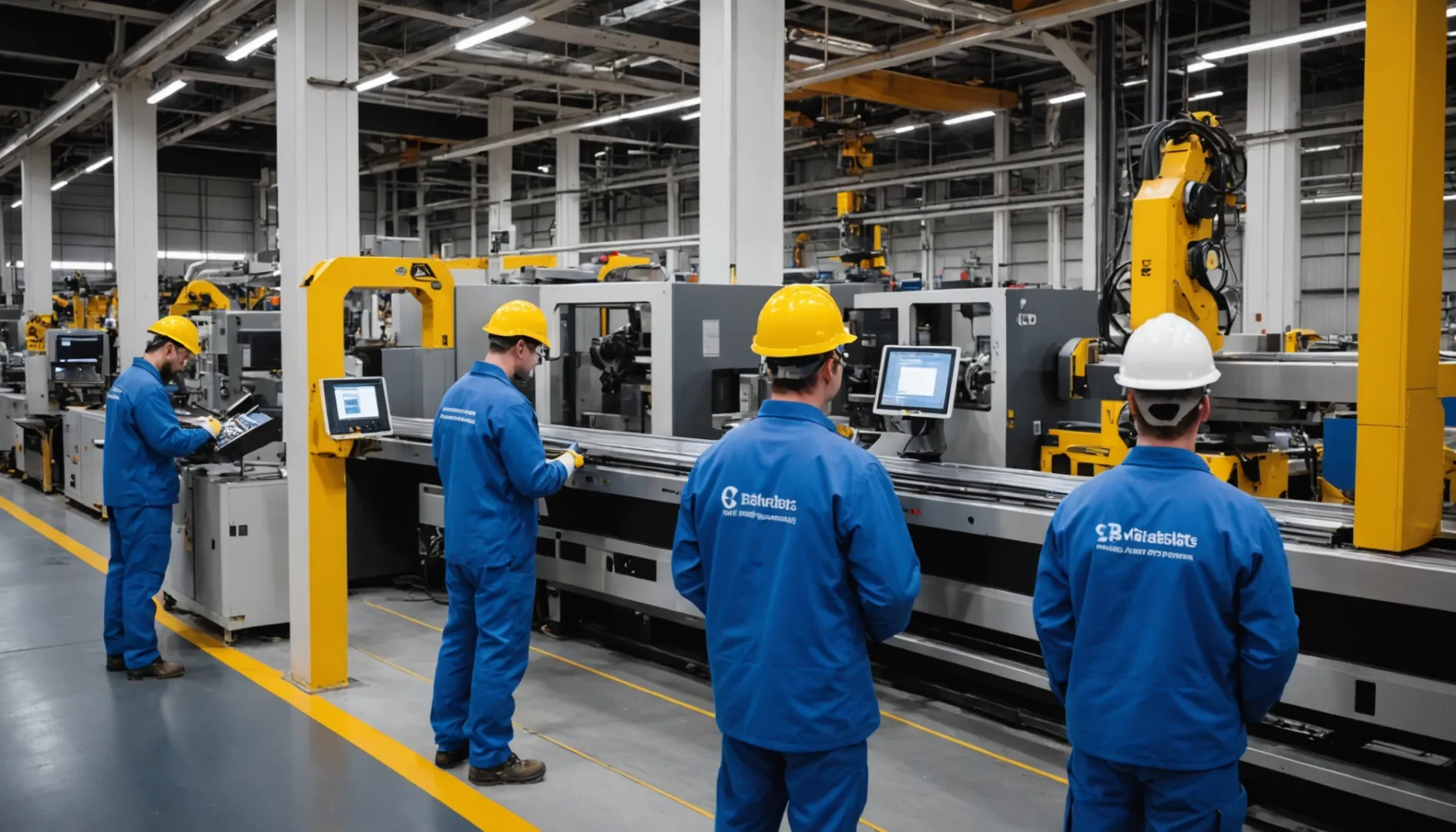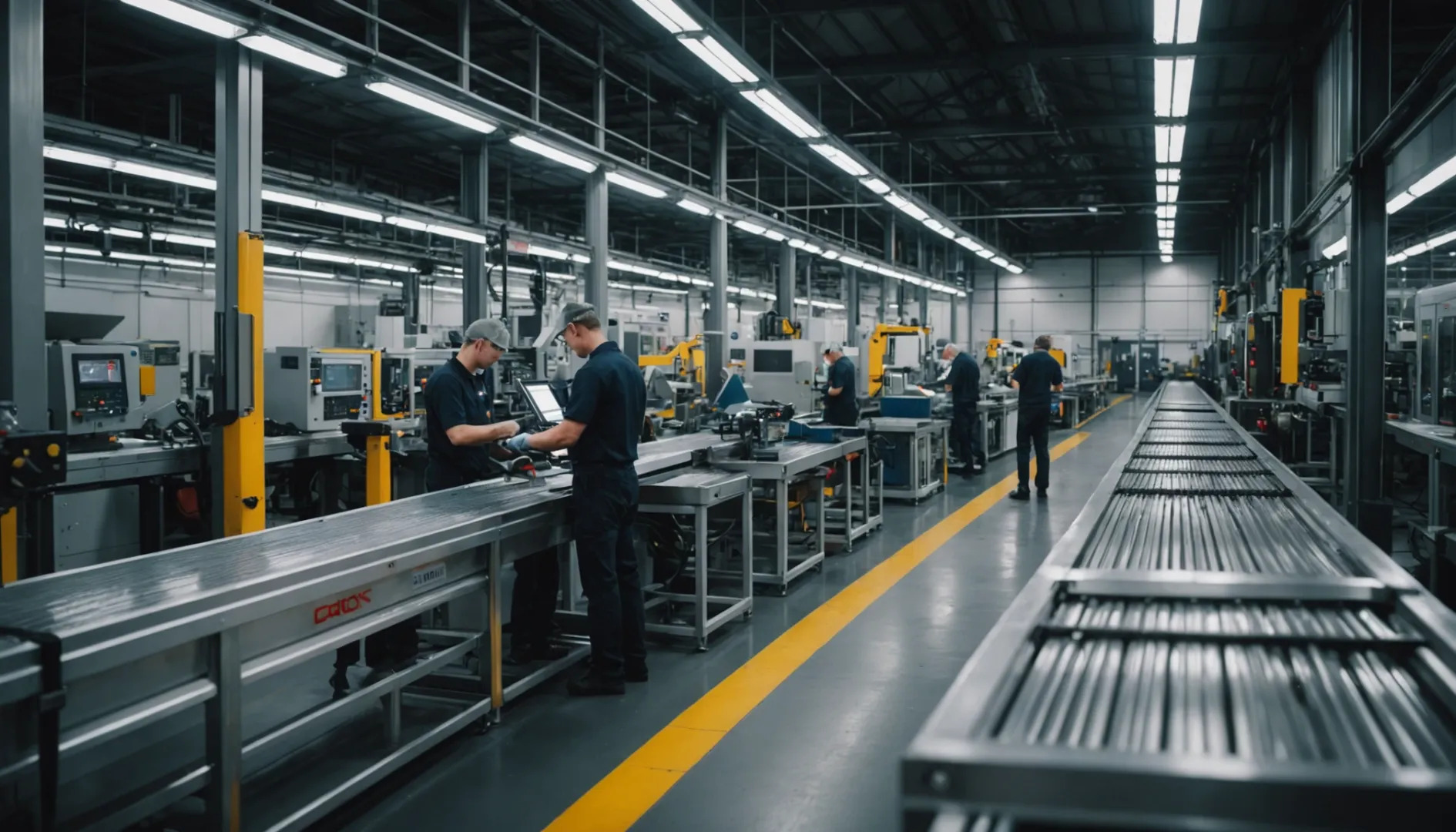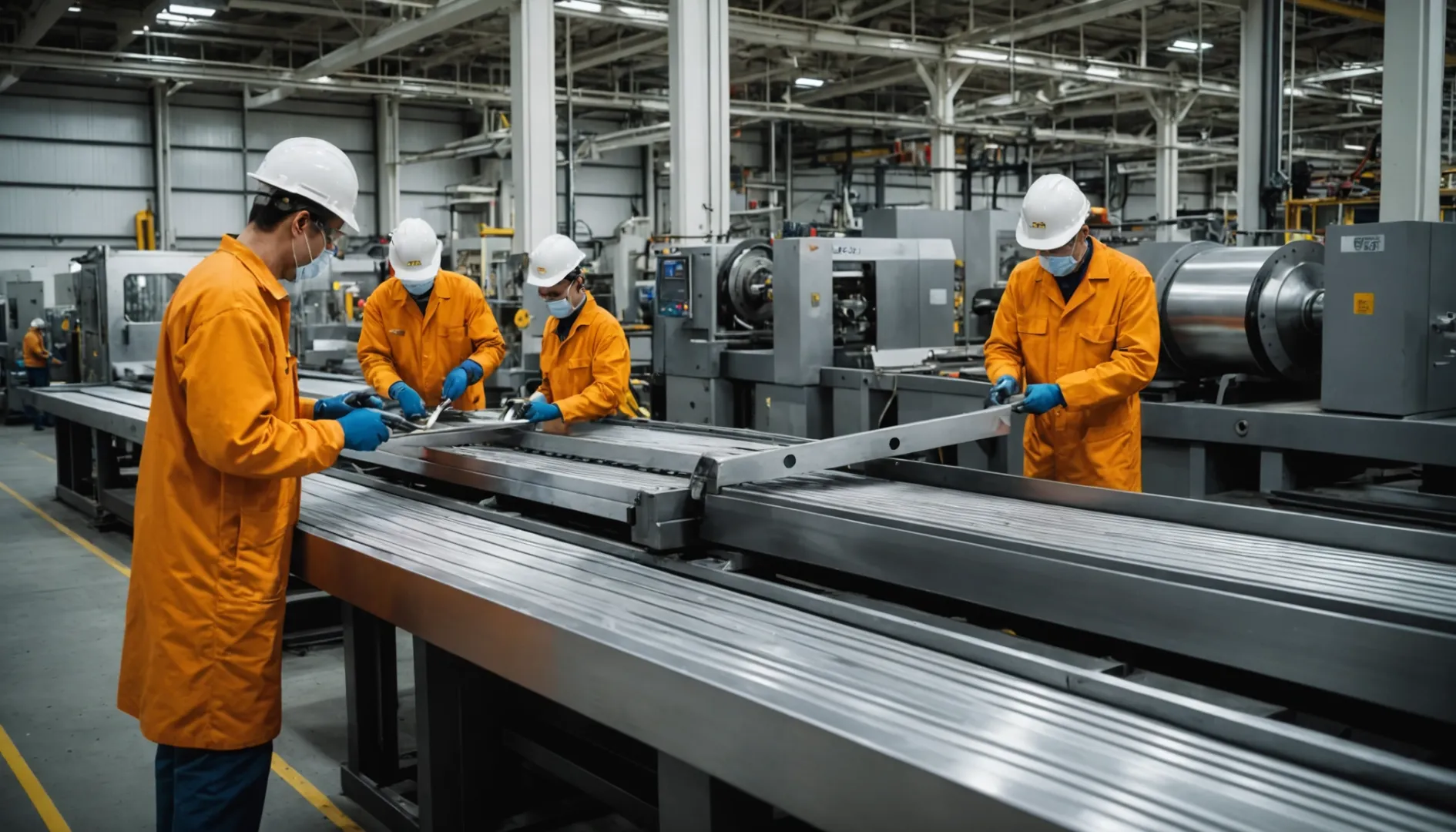Why Are Guangdong Xingfa Aluminium Co Ltd Prices Considered Expensive?

Ever wondered why Guangdong Xingfa Aluminium Co Ltd’s products come with a hefty price tag?
The prices of Guangdong Xingfa Aluminium Co Ltd are considered high due to their dedication to premium-quality materials, cutting-edge manufacturing techniques, hefty R&D funding, and a robust brand image. These factors guarantee top-notch product performance and longevity, justifying the higher costs of their aluminum offerings.
I remember when I first came across Guangdong Xingfa Aluminium. At first, I was a bit taken aback by their prices. But then, as I dug deeper, it became clear that their commitment to excellence in every facet—from high-quality raw materials to the latest in manufacturing tech—was something truly special.
Their investment in research and development isn’t just about staying ahead in the game; it’s about setting new benchmarks in the industry. I’ve heard stories of how their products stand the test of time in the most demanding environments, whether it’s in towering skyscrapers or advanced transportation systems.
Understanding their dedication to sustainability and environmental responsibility also made me appreciate why they charge what they do. They’re not just making aluminum products; they’re crafting a legacy that aligns with global eco-friendly standards. For me, this dedication justifies the premium because I know I’m getting something that lasts and supports a healthier planet.
High-purity materials increase production costs.True
Using high-purity aluminum ingots raises material costs, impacting prices.
Established brands don't invest in R&D.False
Renowned companies allocate substantial resources to R&D, enhancing innovation.
How Does Raw Material Selection Affect Pricing?
Ever wonder how the ingredients you choose for a recipe can completely transform the final dish?
Choosing the right raw materials significantly affects pricing by determining product quality, production costs, and market placement. Premium materials often raise costs but boost brand reputation and customer confidence. Meanwhile, opting for cheaper alternatives might lower expenses but could compromise durability and appeal.

Quality and Cost Implications
I remember the first time I tried baking with top-shelf chocolate instead of the usual supermarket brand. The brownies were richer, the texture was sublime, and yes, they cost more to make. Similarly, manufacturers using high-purity aluminum find themselves paying a premium for its superior properties like enhanced strength. It’s a choice between upfront costs and delivering exceptional quality.
The selection of raw materials directly affects the quality of the final product1. Manufacturers opting for premium materials like high-purity aluminum ingots often incur higher costs due to the superior properties these materials offer, such as enhanced strength and corrosion resistance. This translates into a higher selling price but can justify the cost through superior performance and longevity.
Influence on Production Processes
Think of how different cake recipes require varying baking techniques. Some call for precise temperature control or special equipment. High-purity metals are no different—they might need advanced treatments that add to production costs. On the flip side, using recycled materials can be like baking without sifting flour—it might save time but could affect the end result.
Different raw materials require varying levels of processing and treatment2. For instance, high-purity metals might need specialized equipment or advanced techniques like anodizing to maintain their properties, which adds to production expenses. On the other hand, using recycled or lower-grade materials might save on initial costs but could necessitate additional treatments to meet quality standards.
Market Positioning and Brand Perception
Choosing the best ingredients can turn a home baker into a sought-after pastry chef. Companies, too, benefit from selecting top-tier materials, earning them a premium spot in the market. Brands known for quality can charge more, much like a bakery with an award-winning croissant.
Raw material selection can significantly impact a company’s market position. Brands known for using top-tier materials often enjoy a premium perception in the market, allowing them to charge higher prices. This strategy aligns with companies that collaborate with high-end projects or industries requiring strict compliance3 with international standards.
Cost-Benefit Analysis
Every baker knows the heartbreak of a collapsed cake. Investing in high-quality materials is like using fresh eggs—it might be pricier initially, but it ensures fewer disappointments. A thorough cost-benefit analysis helps balance immediate expenses with long-term gains, reducing returns and enhancing satisfaction.
Conducting a thorough cost-benefit analysis is crucial when selecting raw materials. While high-quality materials increase immediate costs, they can lead to long-term savings by reducing warranty claims, improving customer satisfaction, and minimizing returns due to product failure. Conversely, opting for cheaper alternatives might initially boost profit margins but could harm brand reputation if product quality suffers.
Impact on Supply Chain Dynamics
Sourcing rare ingredients for your signature dish can complicate your grocery shopping—much like acquiring high-quality raw materials adds layers to supply chain logistics. Fluctuations in availability mean you need to strategize inventory smartly, much like prepping your pantry before guests arrive.
The choice of raw materials also influences supply chain logistics. Sourcing rare or high-quality materials might involve complex logistics and longer lead times affecting pricing strategies. Additionally, fluctuations in raw material availability can lead to price volatility requiring companies to strategically manage4 their inventory and supplier relationships to stabilize costs.
High-purity aluminum costs more than recycled aluminum.True
High-purity materials like A00-grade aluminum ingots are pricier due to quality.
All manufacturers use recycled aluminum for cost efficiency.False
Leading manufacturers avoid recycled aluminum to ensure product quality.
How Does Brand Reputation Affect Product Costs?
Remember that time when a brand name alone made you trust a product before even trying it?
Brand reputation impacts costs by enhancing perceived value, enabling companies to charge more. A reputable brand signals quality, making consumers willing to pay a premium. Additionally, top brands often invest heavily in marketing, quality assurance, and customer service, which further influences pricing strategies and maintains their elite status.

Brand Perception and Consumer Willingness to Pay
A well-regarded brand can command higher prices due to its established trust and perceived value. Consumers often equate brand reputation with product quality5, reliability, and superior service, making them more willing to pay a premium. For example, luxury brands like Apple or Mercedes-Benz are able to maintain higher price points because of their longstanding reputations for excellence and innovation.
I remember my first splurge on a luxury item. It was an Apple device, and I justified the price because of its reputation for innovation and quality. This is what brand reputation does—it builds trust, making us willing to pay extra for perceived value.
Marketing and Quality Investments
Maintaining a strong brand reputation requires significant investment in marketing and quality control. Brands like Nike or Coca-Cola spend millions annually on advertising campaigns to reinforce their image. These costs are then factored into the overall pricing strategy.
Think about those catchy Nike ads or Coca-Cola campaigns that stick in your mind. These brands spend millions on marketing to ensure they’re always in our heads when we make purchase decisions. Moreover, companies invest in rigorous quality checks and customer feedback systems to ensure product standards meet consumer expectations, further influencing costs.
Impact on Profit Margins and Pricing Strategies
A reputable brand often enjoys greater pricing power, allowing it to adjust prices without losing significant market share. This flexibility can lead to enhanced profit margins as consumers perceive the higher cost as justified by the brand’s reputation.
I recall discussing with a friend how some brands manage to keep prices high without losing customers. It’s all about perception—if we believe in the quality and exclusivity of a brand, we’re less likely to balk at higher prices.
Competition and Market Positioning
In competitive markets, a strong brand reputation can be a differentiator that justifies higher costs. Companies with established reputations might face less price-based competition, focusing instead on unique features or emotional connections with consumers.
In crowded markets, standing out is key. Brands with established reputations have a leg up, often focusing on unique features or emotional connections rather than competing solely on price.
Long-term Cost Implications
Brands with solid reputations also tend to have long-term relationships with suppliers and partners, potentially reducing operational costs over time through negotiated deals or preferential terms.
Building a solid reputation involves creating long-term partnerships with suppliers, which can lead to cost efficiencies over time. The initial investment in building these relationships is hefty but worth it for stabilizing pricing despite market fluctuations.
Overall, understanding the multifaceted role of brand reputation in determining product costs helps businesses leverage their brand for competitive advantage while explaining why some products command the prices they do.
High-purity aluminum increases product cost.True
Using A00-grade aluminum ingots is costlier than recycled materials.
Established brands do not invest in R&D.False
Renowned companies allocate resources to R&D for innovation.
Why Is R&D Investment Critical for Xingfa Aluminium?
Picture this: a world where innovation leads the way, and you’re always one step ahead. That’s the reality at Xingfa Aluminium, thanks to their savvy R&D investments.
Investing in R&D is crucial for Xingfa Aluminium to boost product quality, innovate new materials, and keep a competitive edge globally. By prioritizing technology and smart manufacturing, Xingfa meets international standards and adapts smoothly to market demands.

Driving Innovation and Quality
You know that moment when you realize you’ve just stumbled upon the perfect idea? That’s the kind of thrill I imagine Xingfa Aluminium feels every time they push the boundaries with their R&D efforts. Their focus on new materials, like high-strength industrial profiles, is not just about keeping up with the times—it’s about setting the pace. This commitment ensures their products are not only tough and durable but also adaptable to a wide array of uses—from automotive industry solutions6 to cutting-edge aerospace tech.
Meeting International Standards
Remember when you first learned the importance of playing by the rules? Well, in the world of global business, adhering to standards like ISO 9001 and ISO 14001 isn’t just about compliance; it’s about thriving. For Xingfa Aluminium, R&D investments mean staying ahead of these benchmarks by crafting processes that are both efficient and environmentally sound. This proactive approach is what helps them meet the market demands7 of developed regions, ensuring they don’t just expand—they lead.
Technological Advancements
Ever felt that little thrill when you finally mastered a new gadget or tech tool? That’s the kind of excitement Xingfa Aluminium channels into their smart manufacturing practices. Through R&D, they embrace AI control systems and Industry 4.0 production lines—technologies that refine precision and consistency. As industries move towards automation, these advancements aren’t just cool—they’re essential for sustaining growth8 and staying ahead of the curve.
Strategic Positioning in Emerging Markets
We’ve all had those moments when we spot an opportunity that others might overlook. That’s exactly how Xingfa Aluminium approaches emerging sectors like new energy vehicles and renewable energy. By innovating with high-temperature-resistant alloys or fire-retardant materials, they target niche markets with unique demands. This strategy not only cements their status as industry leaders but also unlocks doors to globally significant partnerships in high-value projects globally recognized9.
High-purity aluminum ingots improve product quality.True
Using A00-grade aluminum ensures superior strength and durability.
Recycled aluminum is used in high-end products.False
High-end products use pure aluminum, not recycled, for quality.
How Do Certifications and Standards Influence Prices?
Ever wonder why some products come with a hefty price tag just because they’re certified? Dive into the world where certifications and standards meet pricing strategies.
Certifications and standards boost prices by ensuring quality, improving market appeal, and requiring compliance investments. While this raises costs, it also provides a competitive edge and fosters trust.

Ensuring Quality and Trust
I’ve always been a stickler for quality, especially when it comes to the products I choose. Certifications often act like a seal of approval that tells me I’m making the right choice. For instance, imagine buying a product with the ISO 9001 stamp—it signals a company’s dedication to top-notch quality management. This kind of assurance doesn’t come cheap. The investment in testing10 and audits to achieve these certifications isn’t just a line item on a budget; it’s a serious commitment that can bump up production costs—and yes, that often shows up in the final price I pay.
Market Adaptability and Global Reach
I remember the first time I realized how important it was for companies to play by the rules of international standards. It hit me when I was shopping for something as simple as an electronic gadget. Knowing that a company adheres to standards like ASTM or JIS gives me confidence that their products will work seamlessly across borders. This adaptability means they have to tweak their offerings to meet different regional requirements, which can be costly. But it opens doors to global markets and can lead to a surge in sales. Companies that navigate these waters successfully can charge a premium, leveraging their reputation as industry leaders.
Compliance Costs and Investment
Every time I hear about a company going through the rigors of gaining certification, I’m reminded of the hidden costs behind every product. Achieving standards like ISO 14001 for environmental management isn’t just about having a green badge—it’s about investing in new equipment, training staff, and revamping processes. These investments in compliance11 are steep but crucial. They impact not just the price today but also how the company operates in the long run.
Competitive Advantage and Brand Value
There’s something reassuring about seeing familiar certification logos on products. It often sways me towards choosing them over others. Products that boast well-known certifications enjoy a competitive advantage because people, like me, see them as more trustworthy. Brands that consistently deliver this level of quality can demand higher prices, thanks to their perceived superior value. I’ve seen this in industries where high-end clients prefer certified products for large-scale projects, bolstering brand image and marketability. This brand reputation12 creates a sense of reliability that many of us are willing to pay extra for.
High-purity aluminum increases production costs.True
Using A00-grade aluminum ingots raises costs due to their purity.
ISO certifications reduce manufacturing expenses.False
Achieving ISO certifications requires additional investment in testing and compliance.
Conclusion
Guangdong Xingfa Aluminium Co Ltd’s high prices stem from premium materials, advanced manufacturing, significant R&D investment, strong brand reputation, and commitment to sustainability, ensuring superior product quality and longevity.
-
Discover how premium aluminum enhances product durability and appeal. ↩
-
Explore the financial impact of specialized treatments on production. ↩
-
Learn about compliance requirements for global market success. ↩
-
Find strategies to handle supply volatility and stabilize costs. ↩
-
Explore how product quality influences consumer trust and willingness to pay. ↩
-
Explore how Xingfa Aluminium meets automotive sector demands with innovative solutions. ↩
-
Learn how Xingfa adapts its products to meet developed markets’ expectations. ↩
-
Understand Xingfa’s strategies for sustainable growth amid changing trends. ↩
-
Discover Xingfa’s involvement in prestigious global projects and partnerships. ↩
-
Discover the rigorous testing involved in obtaining ISO 9001 certification. ↩
-
Explore the financial implications of ISO 14001 certification compliance. ↩
-
Learn how certifications can improve brand image and market presence. ↩



